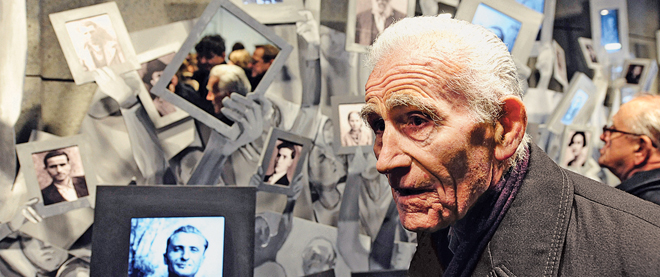Honouring Macedonia’s lost Jewish community
Almost all of Macedonia’s Jews died in the Holocaust. Now a new museum is keeping their memory alive.
Ognen Teofilovski/Reuters
Share

The fate of Macedonia’s Jewish community during the Second World War was unique only in the thoroughness of its destruction.
Just after midnight on March 11, 1943, Bulgarian troops occupying the Yugoslav republic surrounded the three cities containing large Jewish populations. “Following what had become the standard system, this operation was carried out at a single stroke with great cruelty,” writes Leni Yahil in her seminal history of the Holocaust. More than 7,000 Jews were rounded up and sent to the Treblinka death camp. Twelve lived.
Of a pre-war population of approximately 8,000, some 300 Macedonian Jews survived the war. Some joined the partisans. Others departed to Albania or were detained in less murderous camps than Treblinka. About 1,000 fled Bulgarian occupation to live with relatives in northern Greece, which until 1943 was occupied by Italians who declined to implement Hitler’s final solution. But this escape was temporary. The Germans took over the occupation when Italy capitulated, and the Macedonian Jews sheltering in northern Greece were sent to Auschwitz.
In the end, the Macedonian Jewish community was effectively wiped out. Today only 100 Jews remain. This presented the government of the new Macedonian state, which declared independence from Yugoslavia in 1991, with a dilemma. “We wanted to give respect and give properties back to the Jewish people, but there were not many ancestors of the Macedonian Jews you could give back properties to,” says Ljuben Tevdoski, Macedonia’s ambassador to Canada. Instead, a Holocaust memorial fund was established with money from Jewish properties and possessions that were stolen during the war but that could not be returned. Tevdoski was its deputy director.
The fund resulted in a Holocaust museum, which was inaugurated last March in Skopje. The small Macedonian capital now joins Paris, Berlin, Washington, and Jerusalem among cities with a museum dedicated to the Jewish catastrophe. The museum also contains exhibits on the pre-Holocaust history of Macedonian Jewry. They had lived in Macedonia since Roman times, and thrived especially after the arrival of Sephardic Jews, expelled from Spain and Portugal in the 15th century. Tevdoski, whose background is in archaeology and art history, is enthusiastic about the architecture and material culture that has been preserved.
The museum is part of the Holocaust Memorial Centre, which also consists of a research centre and a public gallery containing art unrelated to the Holocaust. Tevdoski says the museum’s designers wanted it integrated into a public space that was inviting to Macedonians of all backgrounds. “I really think it promotes the Jewish people of Macedonia, but equally Macedonian values,” he says, explaining that Macedonians, having lived as minorities before achieving independence, feel they should recognize the culture and history of minorities in the modern Macedonian state.
“Is it more expensive to build a multicultural state? Maybe,” he says. “But then we claim that it is a much more sustainable model.”